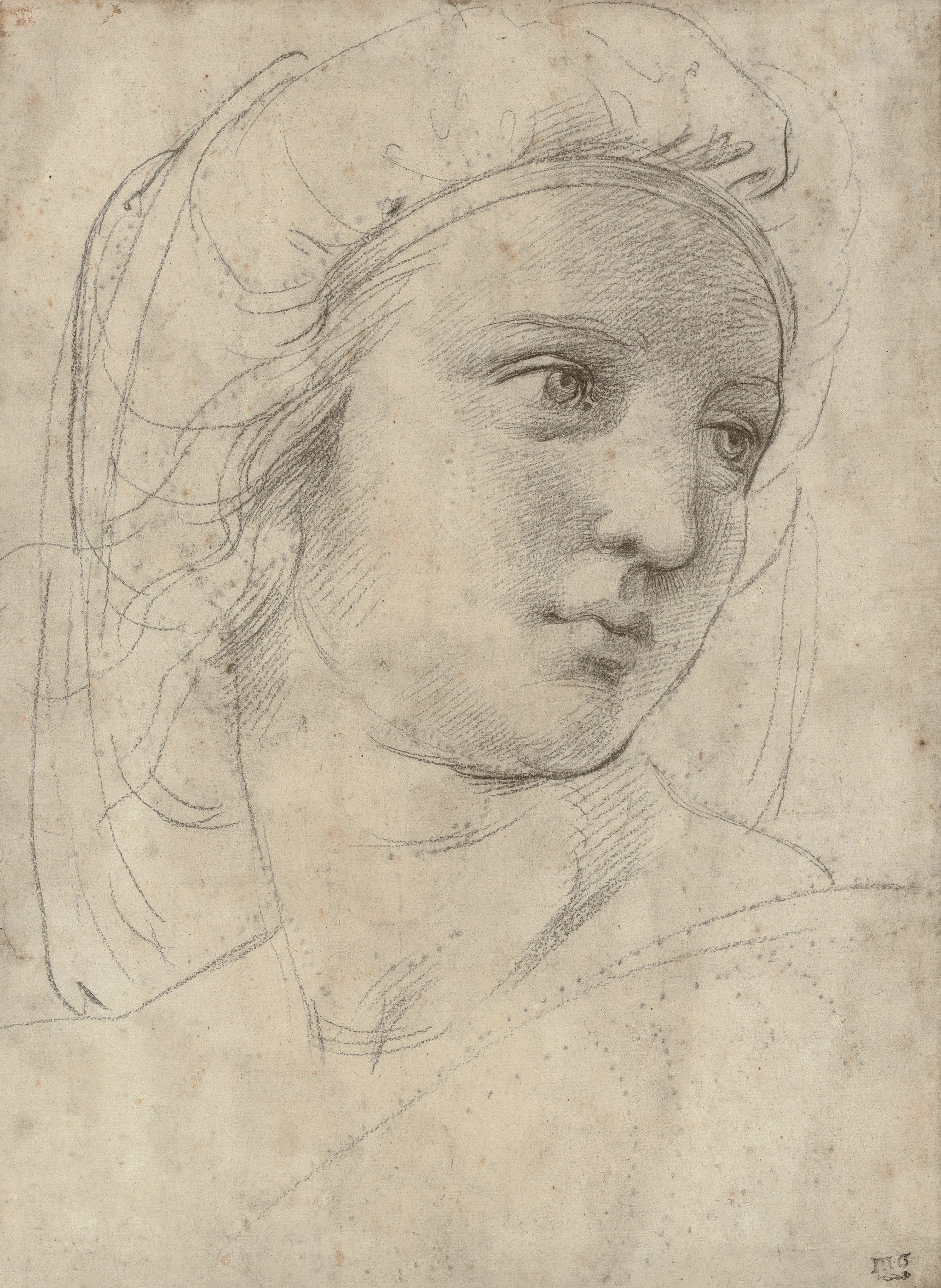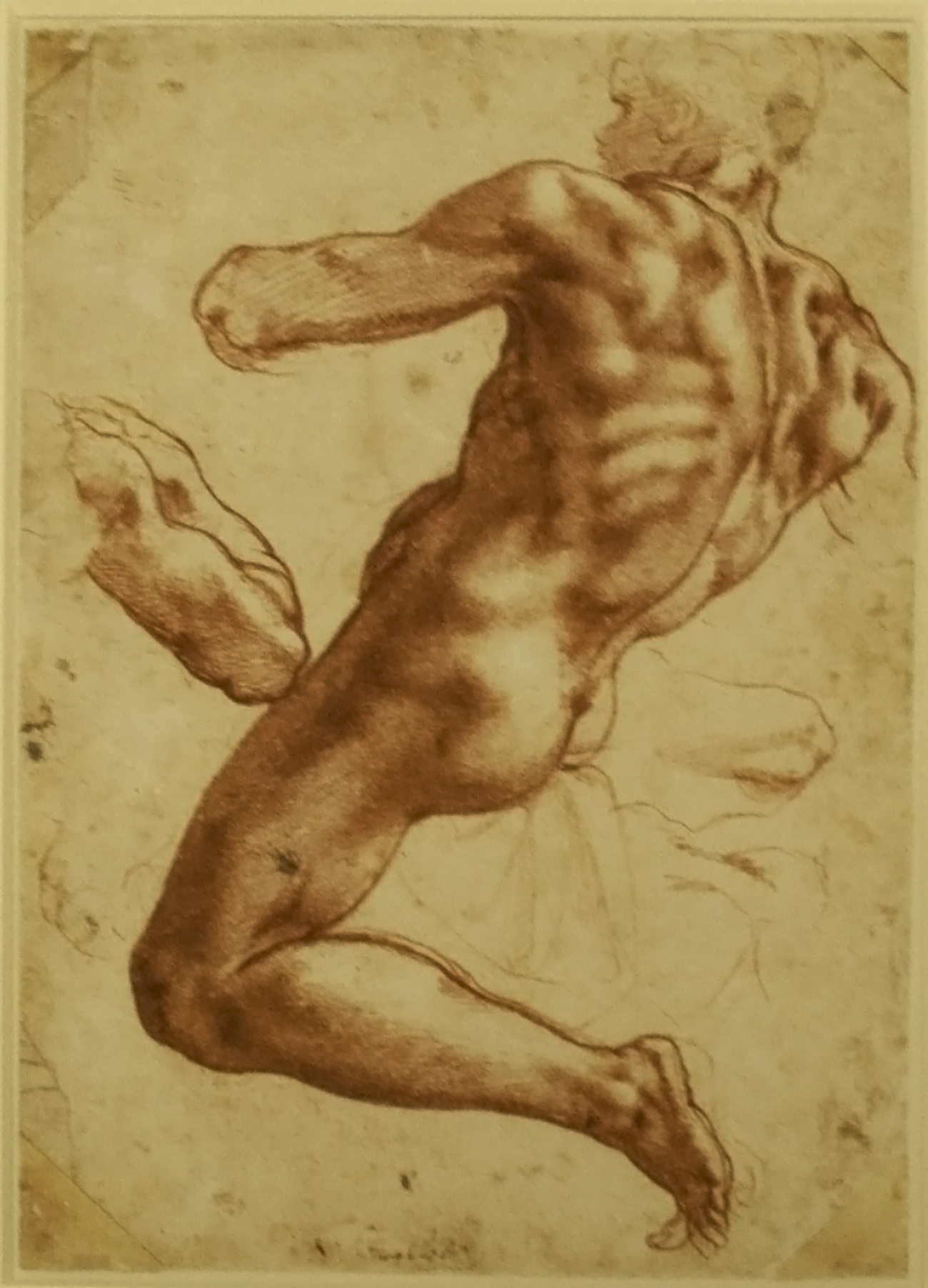
Raphael, The Virgin with the Pomegranate, ca. 1504, black chalk, Vienna, Albertina.

Raphael, Lucretia, ca. 1508-10, pen and brown ink over black chalk, partially incised with a stylus, New York, Metropolitan Museum of Art.
This drawing of Lucretia, who committed suicide after being raped, depicts the moment when she is about to plunge a dagger into her chest. Her idealised beauty and the proportions of her figure refer to classical sculpture although she is not based directly on any known statue.

Raphael, Head of a Muse, ca. 1510, black chalk over pounce marks, traces of stylus, watermark encircled Saint Anthony's cross, Private Collection.

Raphael, Study for the Phrygian Sibyl, 1511, red chalk over stylus, London, British Museum.
This drawing is a study for a figure of a Sibyl (a female prophet from the classical world) from the Chigi Chapel in Santa Maria della Pace Rome. The chapel’s patron, Agostino Chigi, was a Sienese banker and friend of Raphael’s.

Marcantonio Raimondi after Raphael, Suicide of Lucretia, 1515, engraving.

Raphael, Studies for the Disputa (recto), 1509-11, pen and brown ink , Los Angeles, J. Paul Getty Museum.

Michelangelo, Study of an Ignudo, ca. 1511, red chalk, lead-point, Haarlem, Teylers Museum.
This study of an ignudo (which means a naked man in Italian) was produced in preparation for Michelangelo’s famous ceiling with scenes from the Book of Genesis in the Sistine Chapel in Rome (produced beween 1508 and 1511). Twenty ignudi frame some of the stories, although why they appear is not clear. The musculature is comparable to that of the Belvedere Torso.

Apollonios, Belvedere Torso, first century BC, marble, Vatican City, Vatican Museums.

Raphael, Two Studies of Male Nudes, ca. 1515, red chalk and metal-point, Vienna, Albertina.

Michelangelo, Lamentation, ca. 1530, red chalk, partly over a preliminary drawing in black chalk, Vienna, Albertina.

Michelangelo, The Dream (Il Sogno), ca.1 533, black chalk on laid paper, London, Samuel Courtauld Trust.
Michelangelo’s highly complex allegory shows an idealised nude youth surrounded by worldly vices. A winged being approaches with a trumpet as if to awaken him to a new life. The drawing was produced as an independent work, possibly as a gift to Michelangelo’s friend, the young Roman nobleman Tommaso de’ Cavalieri. It immediately became famous among collectors and artists, and, unusually for a drawing, numerous copies were made. The drawing acquired a title when the Renaissance biographer Giorgio Vasari named it il Sogno in 1568.











